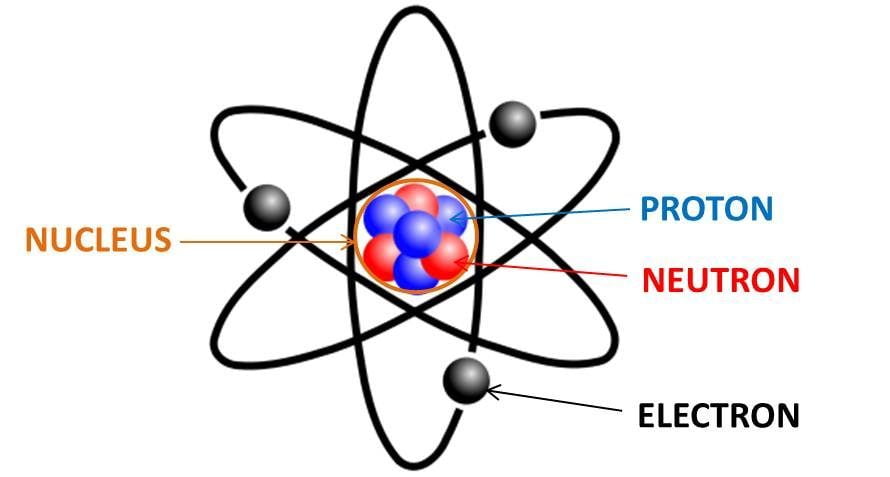

In this tutorial, you will learn how to find and calculate the number of protons, neutrons, and electrons in an atom or element. In addition, you will learn about the different subatomic particles. If you enjoy this tutorial, be sure to check out our others!
The atomic number of an element is simply the number of protons in its nucleus. The easiest way to find the atomic number, is to look on a periodic table, the atomic number is in the upper left corner, or is the largest number on the square.
The number of protons in an atom is equal to the atomic number of the element. For example, let’s use oxygen. According to the periodic table, oxygen has the atomic number eight. The atomic number is located above the element’s symbol. Since oxygen has an atomic number of eight, there must be eight protons total. Moreover, the number of protons never changes for an element.
The number of neutrons in an atom can be calculated by subtracting the atomic number from the atomic mass. Both of these numbers can be found on the periodic table. The atomic number is listed above the symbol of the element whereas the mass number is placed below. Let’s keep using oxygen as our example. Its atomic mass is 15.999 atomic mass units (amu) and its atomic number is 8. When we subtract 8 from 15.999, we will get 8. Also, it should be noted that the number of neutrons for an element may vary. Some elements have isotopes, which have different masses and therefore different numbers of neutrons.
The number of electrons in an atom is equal to the atomic number of an element, for neutrally charged species. This means the number of electrons and the number of protons in an element are equal. Therefore, the number of electrons in oxygen is 8. Moreover, since these two subatomic particles, electrons and protons, have opposite charges, they cancel out and keep the atom neutral.
In this chemical reaction, known as the Briggs-Rauscher reaction, the number of protons and neutrons in each atom do not change. Electrons, however, are moving between atoms, causing different ions to form and causing the color changes. Please subscribe to our YouTube channel, lots more amazing videos are on the way!
ChemTalk has developed the world’s best interactive periodic table, in our humble opinion. Experience our periodic table here.
Problem 1
Uranium-235 is an important isotope used in nuclear fission reactions for nuclear power and nuclear weapons. With an atomic number of 92 and atomic mass of 235, what are the numbers of protons, neutrons, and electrons in a neutrally charged atom of uranium-235?
Problem 2
Americium-241 (Atomic Number: 95) undergoes alpha decay, which involves the loss of two protons and two neutrons in the form of an alpha particle. How many protons, neutrons, and electrons does at atom of Americium-241 have after releasing two alpha particles? Assume the number of electrons does not change.
1: 92 protons, 143 neutrons, 92 electrons
2: 91 protons, 142 neutrons, 95 electrons